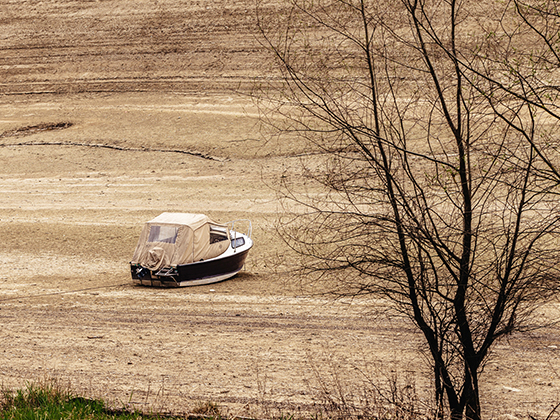Source: Active Sustainability
27 May 2020
Do you know what does hydric stress mean? Have you ever imagined what would happen if you ran out of water? In Cape Town, South Africa, the authorities were on the verge of declaring “Day Zero” in early 2018, which would have made it the first world city ever to be forced to cut the supply because of the water scarcity. Significant supply restrictions and subsequent heavy rainfall were thankfully enough to restore dam levels and to allay fears, for now, of such a drastic scenario actually occurring. Water stress led authorities to reduce consumption to 50 litres per inhabitant/day, while recommending two-minute showers and placing a ban on watering gardens, washing cars or filling swimming pools. The situation was so dire that plans were put in place to cut off the supply to 75% of the city’s taps, forcing the city’s nearly four million inhabitants to pick up their water from one of just 22 water collection points.

Water stress is a concept that is used when demand for water exceeds available volume or when use is restricted due to poor water quality. Water stress is considered to exist where the annual supply of water in a country or region falls below 1,700 cubic metres per individual, i.e. between eight and nine glasses of water a day. According to the United Nations, one out of every six people in the world now finds themselves in this situation, making it a truly global problem that is becoming increasingly worrisome. In many countries, water is being consumed much faster than it is being replenished. The waste of water in cities is a challenge that we must face immediately.
The causes of water stress are varied and complex, but the climate crisis and global warming are both constant menaces. Other factors include demographic growth, climatic disruptions and shorter wet seasons, pollution of riverbeds due to industrial activity, human mismanagement of water resources and armed conflict.
The poorest countries tend to be the hardest hit. According to figures released by Action Against Hunger, in Syria more than half of the water network has been damaged in the fighting, and in Yemen, the population without access to safe water has risen from 40% to 70% since the start of the conflict.
Nearly one-fifth of all countries worldwide will face water scarcity problems by 2040. According to an analysis conducted by the World Resources Institute (WRI), a non-profit organisation that investigates the planet's natural resources, these are the countries with the most severe water stress updated in 2019:

Israel
Lebanon
Iran
Jordan
Lebanon
Kuwait
Saudi Arabia
Eritrea
United Arab Emirates
San Marino
Bahrain
India
Pakistan
Turkmenistan
Oman
(See complete list here)
The most vulnerable countries are in the Middle East
Of the 33 countries most likely to encounter water stress and water supply cuts in 2040, 14 are located in the Middle East, an area with high temperatures and very little rainfall, meaning very few rivers flow all year round. It is also an area plagued with political unrest and territorial disputes. Nine of these countries could face severe water scarcity: Bahrain, Kuwait, Palestine, the United Arab Emirates, Saudi Arabia, Oman and Lebanon.
Water stress could impact the world’s major economies.
While they are unlikely to face the alarming water stress affecting the Middle East, world superpowers such as the United States, China and India will still have to contend with major problems associated with water scarcity, especially in certain regions such as the Southwestern United States or the Chinese province of Ningxia, where water scarcity could rise from 40% to 70%.
In South America, Chile is currently one of the precarious countries, having deteriorated from average water stress in 2010 to now being considered one of the locations likely to see extremely high water stress by 2040, mainly as a result of rising temperatures and changing rainfall patterns in the region
Spain and Greece top the table of European countries most affected by water stress, joining their neighbouring countries in North Africa.
How can we reduce the threat of water stress? There are still many things we can do to reduce water-related risks before it is too late. As is almost always the way, we will have to count on the full commitment and support of governments, local institutions, the private sector and the individual will of each and every one of us: limiting the use of water for certain activities, planting more efficient crops, championing water purification and desalination infrastructures, replanting forests, reducing food waste and promoting more sustainable diets.
Sources: World Resources Institute, Aquae Foundation, Twenergy


No comments:
Post a Comment